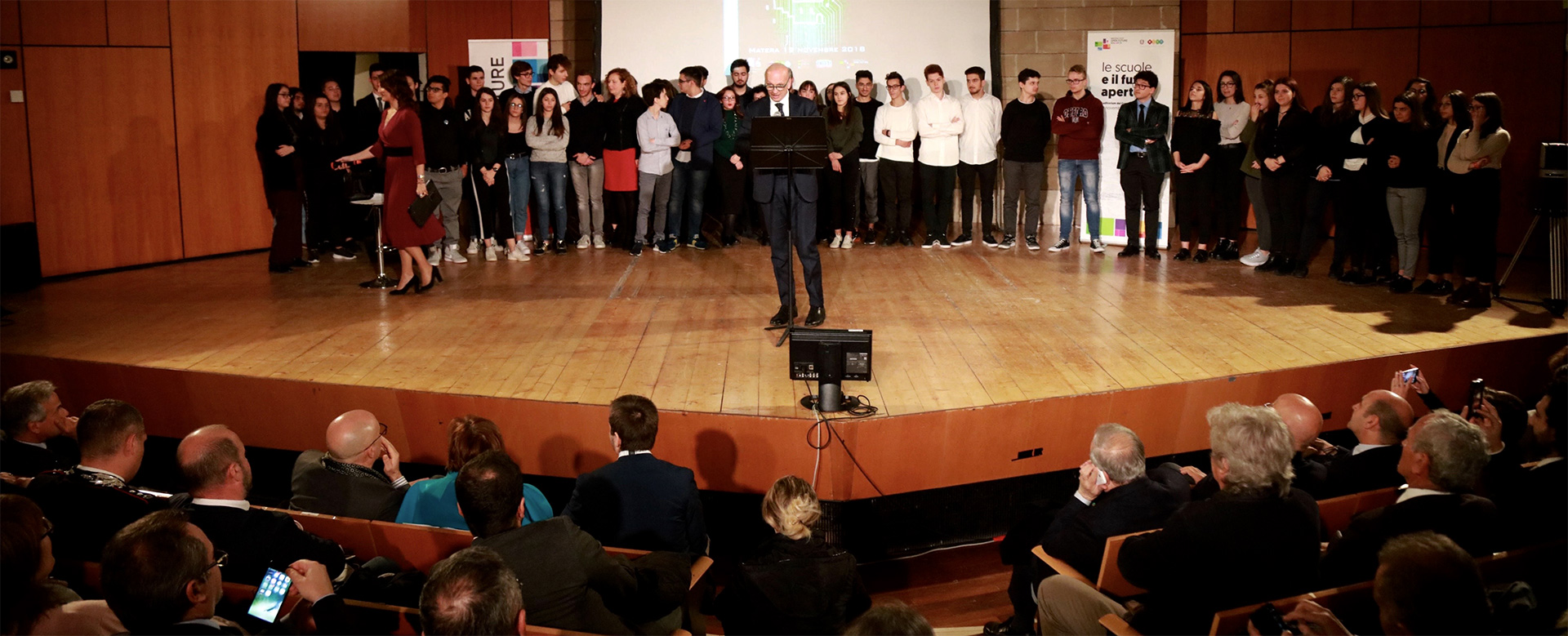
School and the Open Future
Maria is ten years old, but she looks no older than seven. She has big sparkling eyes. She can’t keep her hands still while telling an audience of a few hundred people how block-programming works – something she learned to use thanks to the “Heritage in Game” Project.
She looks straight into the camera and introduces the audience to the world of computational thinking in a disarmingly simple way. She speaks facing the first rows reserved for the authorities and right behind them to the huge audience of students, showing no signs of fear.
Maria, who is ten years old but looks no older than seven, perfectly embodies the spirit of the projects which Matera 2019 has set up in schools throughout Basilicata. Listening to her, one understands to what extent the goal has been reached so far.
On the 19th of November, the day at the Auditorium of Matera’s Conservatory of Music belonged to Maria and the many children and adolescents like her. “School and the Open Future” was supposed to be an event for them – and that’s exactly what it was. As the second to the last stage approaching 2019 promoted by Matera 2019 and the MIUR (The Italian Ministry of Education, University and Research), it focussed on the sharing of pathways that challenged young people with questions about how languages – digital languages in particular – are evolving.
From “Heritage in Game” with the two sectors of “Coding” and “Making”, which addressed the pupils of 60 primary and middle schools in Lucania respectively, up to the “Digital School” award specifically for secondary schools, students narrated their experiences and , most importantly, talked about what their “new” school would be like. In other words, they imagined their Open Future.
But the Matera 2019 experience involving schools does not end here. In fact, two projects were also presented – the “19 Schools for 19 Archives” project that will bring new life to the archives of Lucania, and the “Matera 3019” Project, which will enable students to imagine their territory in the next one thousand years.
Indeed, the future is the key to understanding what happened on November 19 th – a future that has got to be open, as the sociologist Stefano Laffi pointed out, and needs to be understood by means of an on-going teaching experience between generations that must start right away. It is with this aim in mind that the platform “education.matera-basilicata2019.it“ presented on that day came into being. This portal is where the story of the Matera 2019 projects activated with schools and those promoted in cooperation with the MIUR is to be told; moreover, one section is set aside for a blog – an open space for secondary school students, a place where to imagine the future and narrate the present as it is happening.
The most significant moments of the day were when Mario Bussetti, the Italian Minister of Education, University and Research, honoured the students in the audience and the many who followed the live broadcast in streaming on YouTube as he handed out prizes to the winners of the “Digital School Award”, and the Open Space Technology afternoon workshops conducted in the classrooms of the “Nicola Festa” Middle School in Matera where the students became designers of the future of our cultural heritage.
Maria is ten years old, but she looks no older than seven. Maria smiles as she says that it is nice to experiment with new things. Maria can’t keep her hand still while talking – she is already in 2019.





